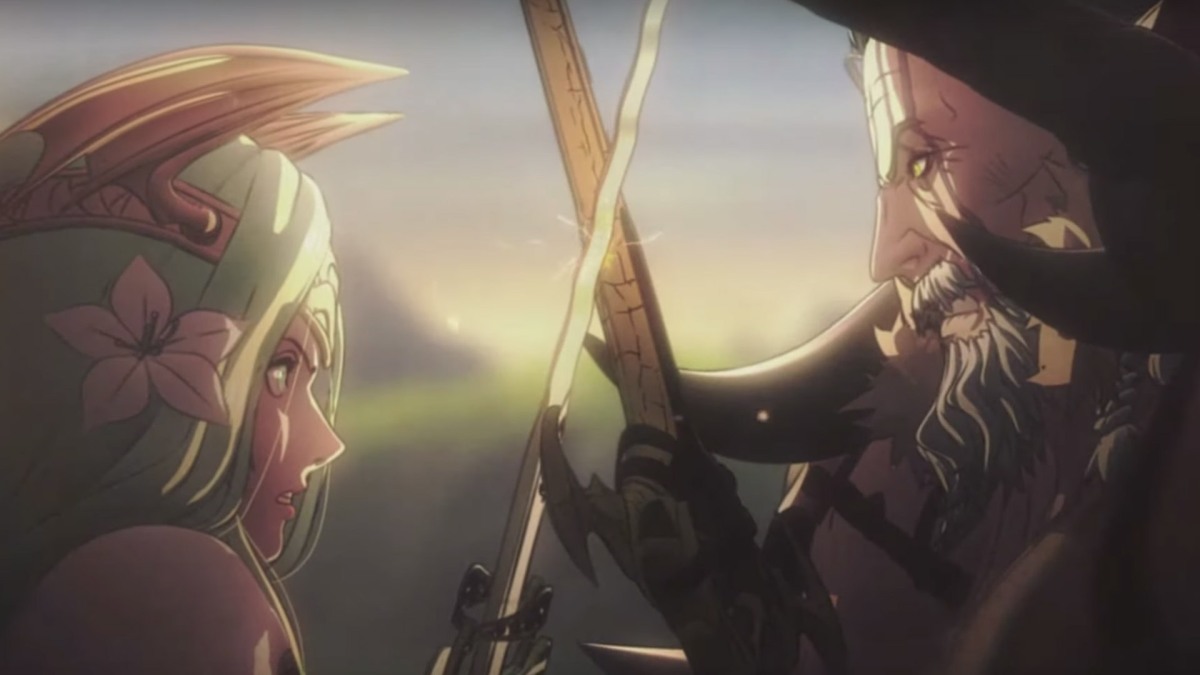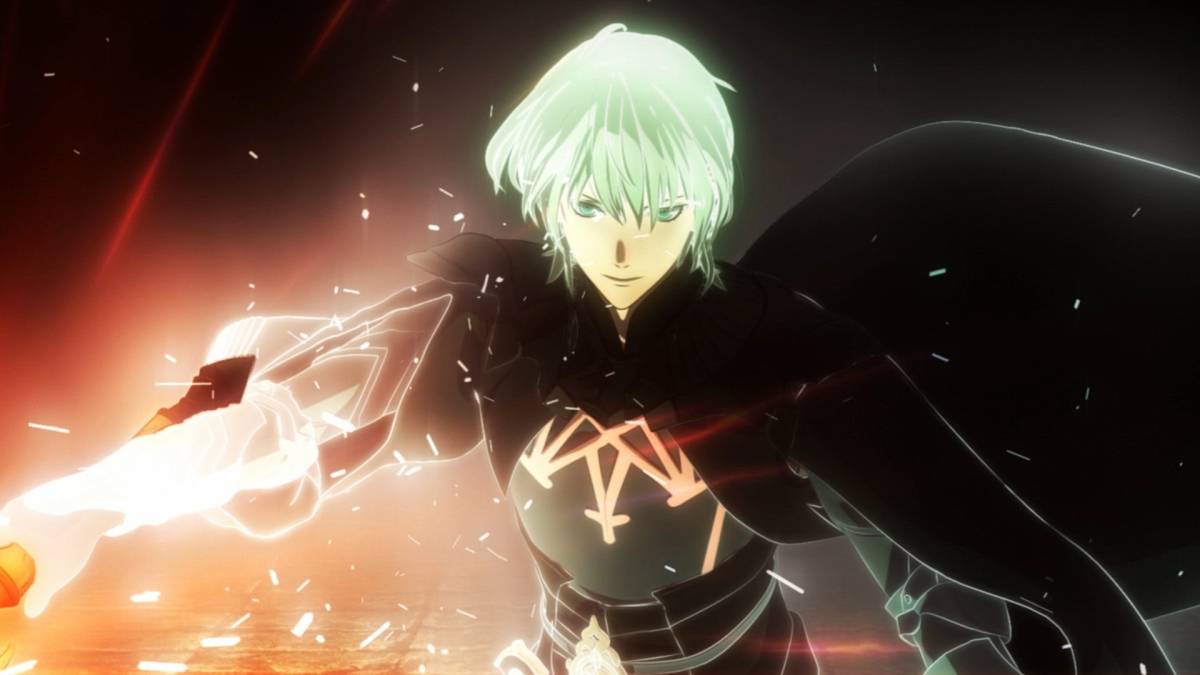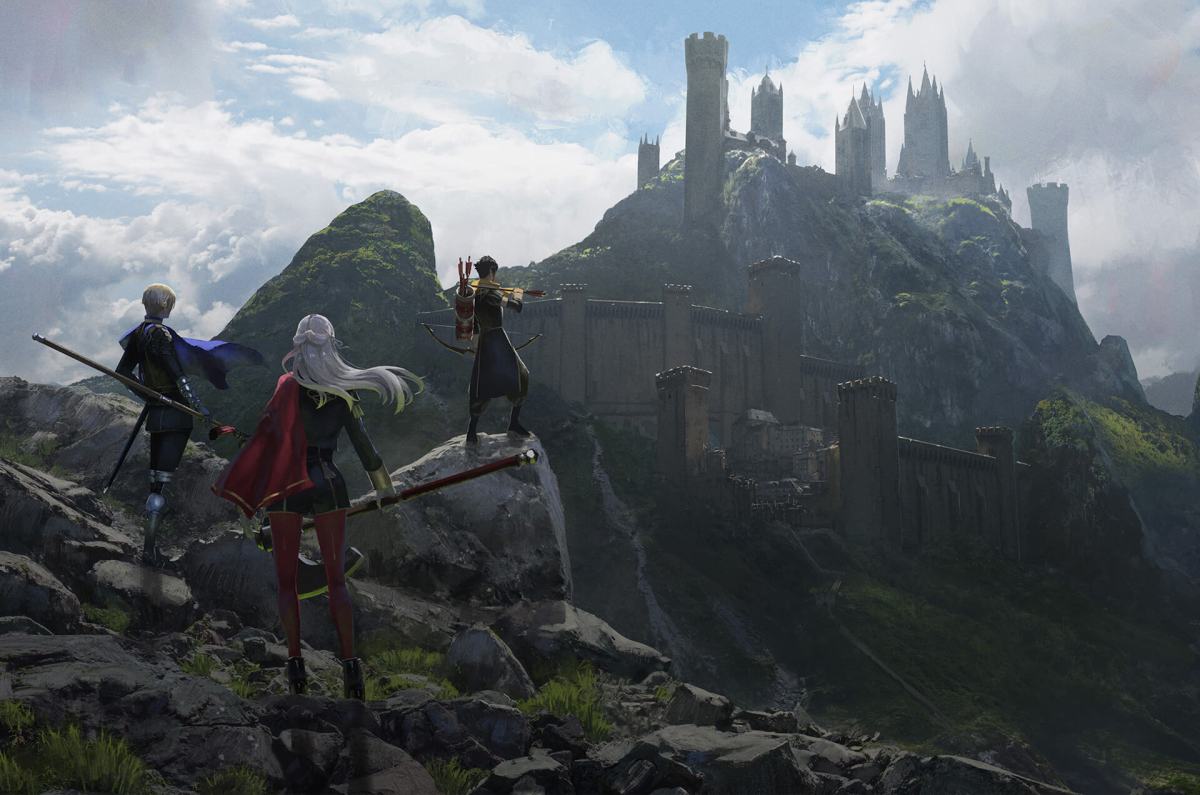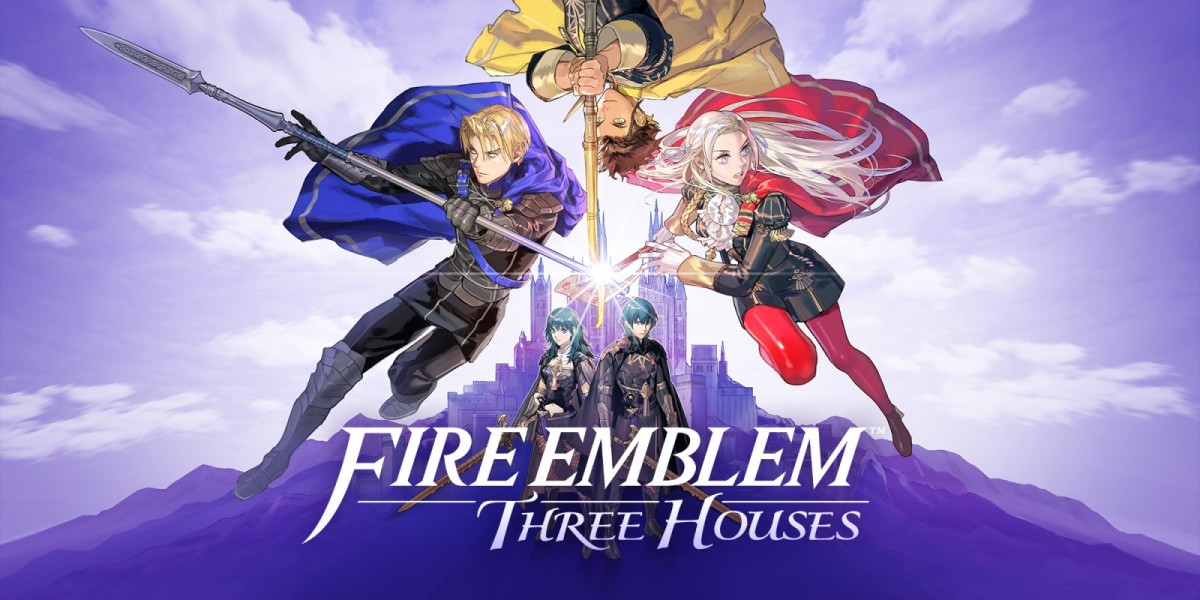This is part four of four of my Fire Emblem Three Houses narrative review. You can find parts one, two, and three in the links.
Reach for my hand,
The Edge of Dawn/Lady of Hresvelg
I’ll soar away
Into the dawn,
Oh, I wish I could stay
Here in cherished halls,
In peaceful days
I fear the edge of dawn,
Knowing time betrays
Every great game has a part where it formally announces its greatness. Sometimes it introduces a new gameplay mechanic, while other times the plot ascends to new heights. Fire Emblem proclaims its greatness when the story shifts into part two, which beautifully merges gameplay mechanics and story. Last time we left off at the cataclysmic cliffhanger that quickly transitioned into a five-year time jump. Your students have reunited with their professor, some of them greatly changed over the course of five years. Continuous warfare has ravaged the continent and there is no victory in sight. Can you cut a path to victory and peace?
There are four different titles to part two: Crimson Flower, Silver Snow, Azure Moon, and Verdant Wind. Each title labels a specific house path. In Crimson Flower you will side with Emperor Edelgard, seizing her extended hand and fulfilling the mission she set out on five years prior: liberating humanity and ushering in a new dawn for Fódlan. Conversely, if you sided with the Church you will travel down the Silver Snow path and fight her every step of the way. Will you march on the capital of the empire against your former protégé, or put an end to the Archbishop who saved your life long ago? Either way, you will have blood on your hands as you forge a new peace.
The other two paths are a bit more distinctive. In Azure Moon you will accompany crown prince Dimitri, fighting both his enemies and personal demons on his path to becoming king of Faerghus. The last five years have been unkind to Dimitri, leaving him broken and unsure about both his past and future. Can you solve the mystery of his parents’ death and reconcile him with the woman he cares for most? It’s a deeply emotional journey. Lastly, Verdant Wind involves a journey with Duke Claude, who is desperately trying to unify the Alliance’s dukedoms and determine who exactly set this war into motion. Who is Claude really and what is his endgame? What happened a millennia ago and how did the magical crest system come about? You will fight with Claude to ensure that history does not tragically repeat itself.
Regardless of your path chosen, there are many permutations still present. What students did you recruit in part one and how are they faring alongside you? More importantly, what students turned against you, and will you have to face them in battle? As previously mentioned, there is an entire gameplay support system running in the background, which means that events might transpire differently based on companionship. Unique conversations can be experienced on the battlefield, as can the opportunity to spare the life of a former student fighting you. Heartbreakingly, not everyone can be spared in this murky and gray war that has few villains present.
Perhaps most interestingly is the fact that there is no correct or “golden” path in the game. The creators of Fire Emblem have confirmed that each story is equally valid, no matter how compelling a certain story narrative is. Many players of the game have walked away confident that their story was “the right one”, only to turn around and play the game once more with a different house. Only then can all of the complexities of the game be truly understood: the absurdly deep lore, multifaceted characters, and dramatic climaxes all take new meaning when seen from a different perspective. This is a game that becomes something greater the more it is experienced time and time again.
And that brings us to the conclusion(s). After the final unique mission of every respective playthrough is completed there are still things left to experience. The entire support system reaches its crescendo: your character returns to the monastery tower where they first met their love five years prior. Heartfelt feelings are exchanged and a marriage proposal is made. The game concludes with an ending epilogue sequence that details how your character lives after the war with their new wife or husband. Likewise, your other battle companions each have dynamic endings depending on their closest relationships: lifelong friendships, surprise marriages, and bittersweet endings can result.
Let us return to the discussion that started this four-part series: why is epic fantasy so challenging and how can it be done well? What makes Fire Emblem superior to so many of its videogame counterparts? It’s simple really, but oh so complex. Epic fantasy has to force an emotional investment, provoke plot curiosity, and ultimately satiate both in a satisfactory way all the while to the very long end. Scope and scale are just exponential factors, not individualistic selling points. Saying a game takes hundreds of hours doesn’t mean it’s good. Every great story in epic fantasy has to have specific strengths to stand on both micro and macro, or it will collapse under its own weight. There is no other path to narrative victory but this one!

















